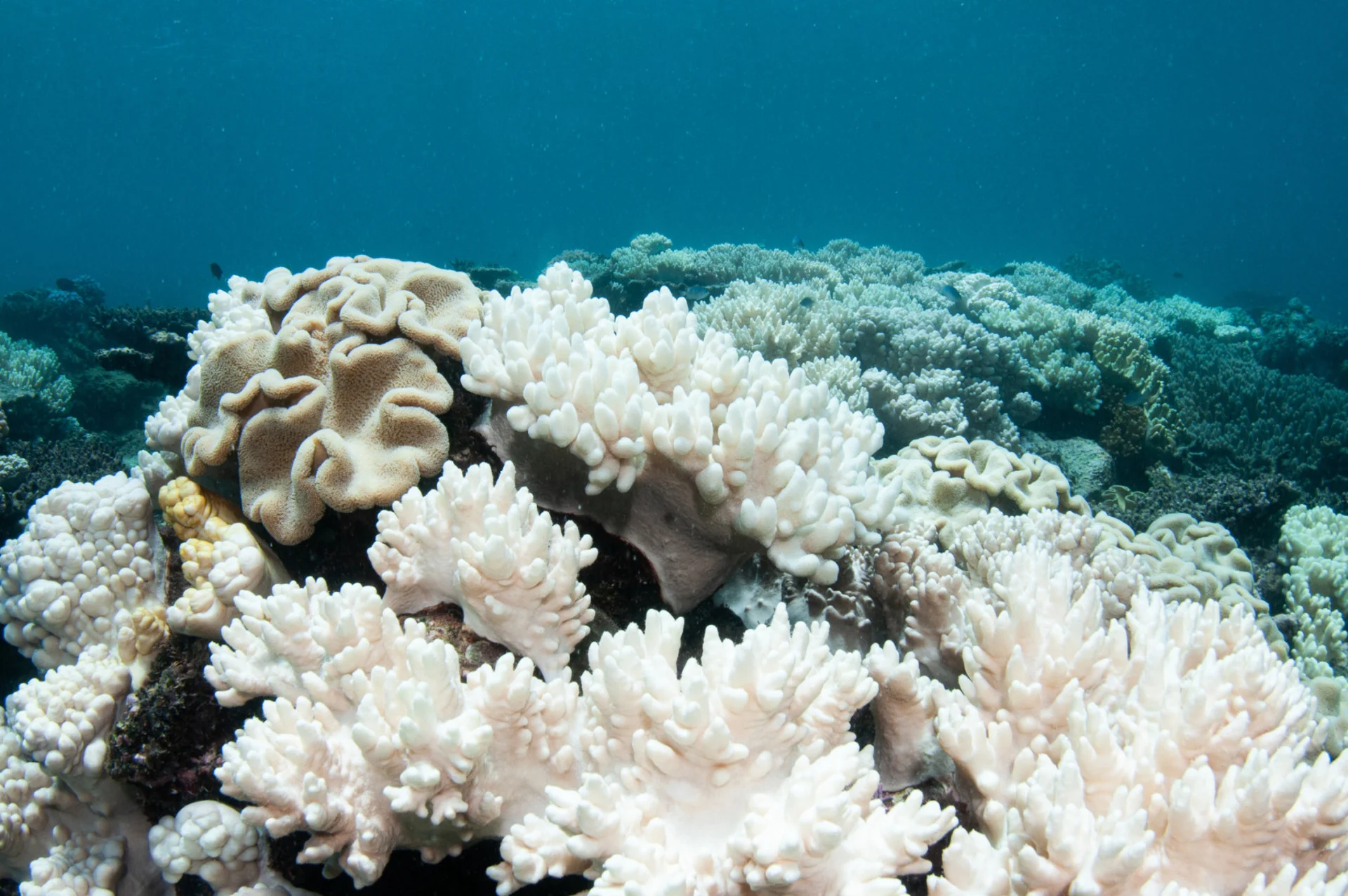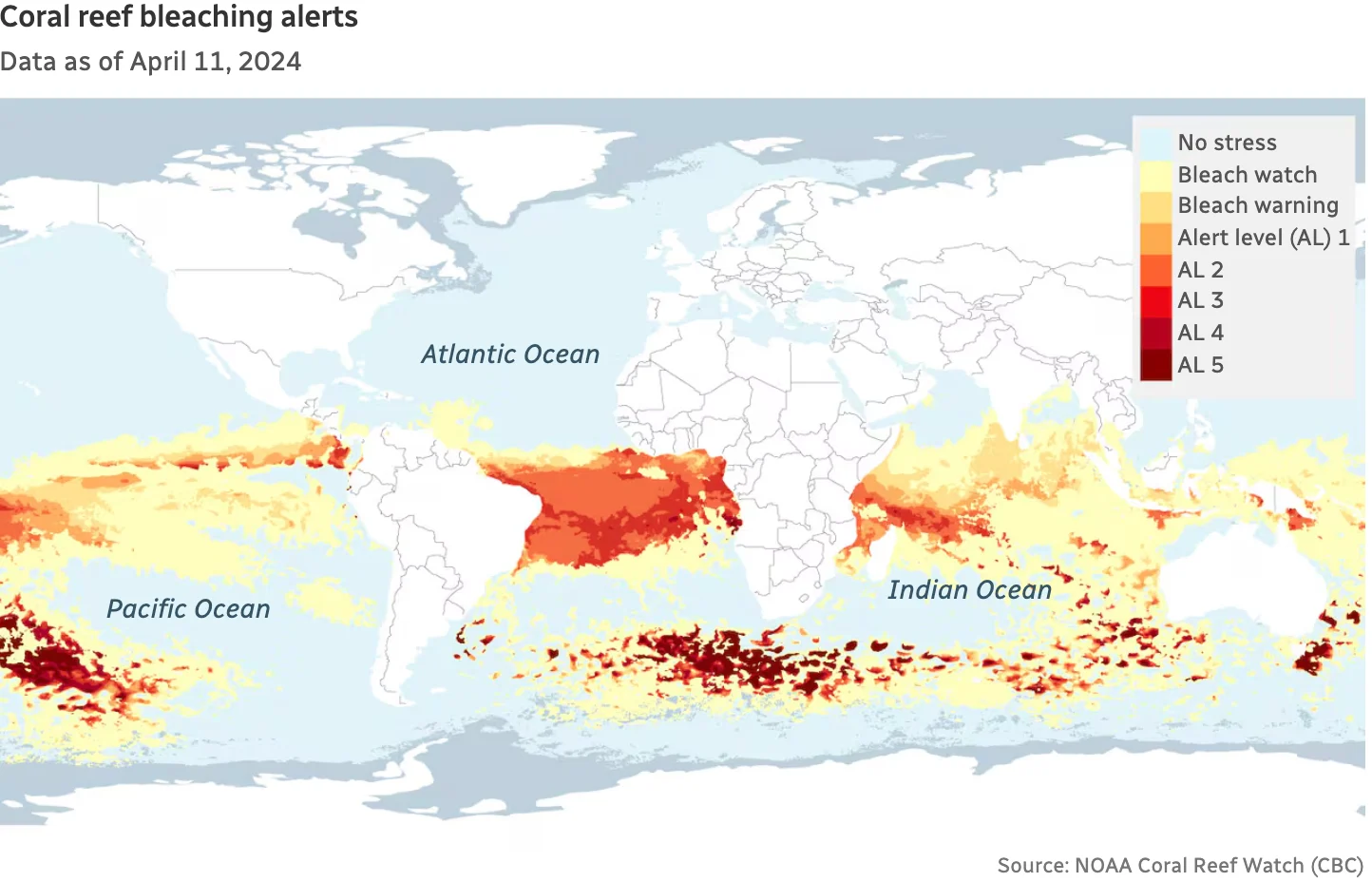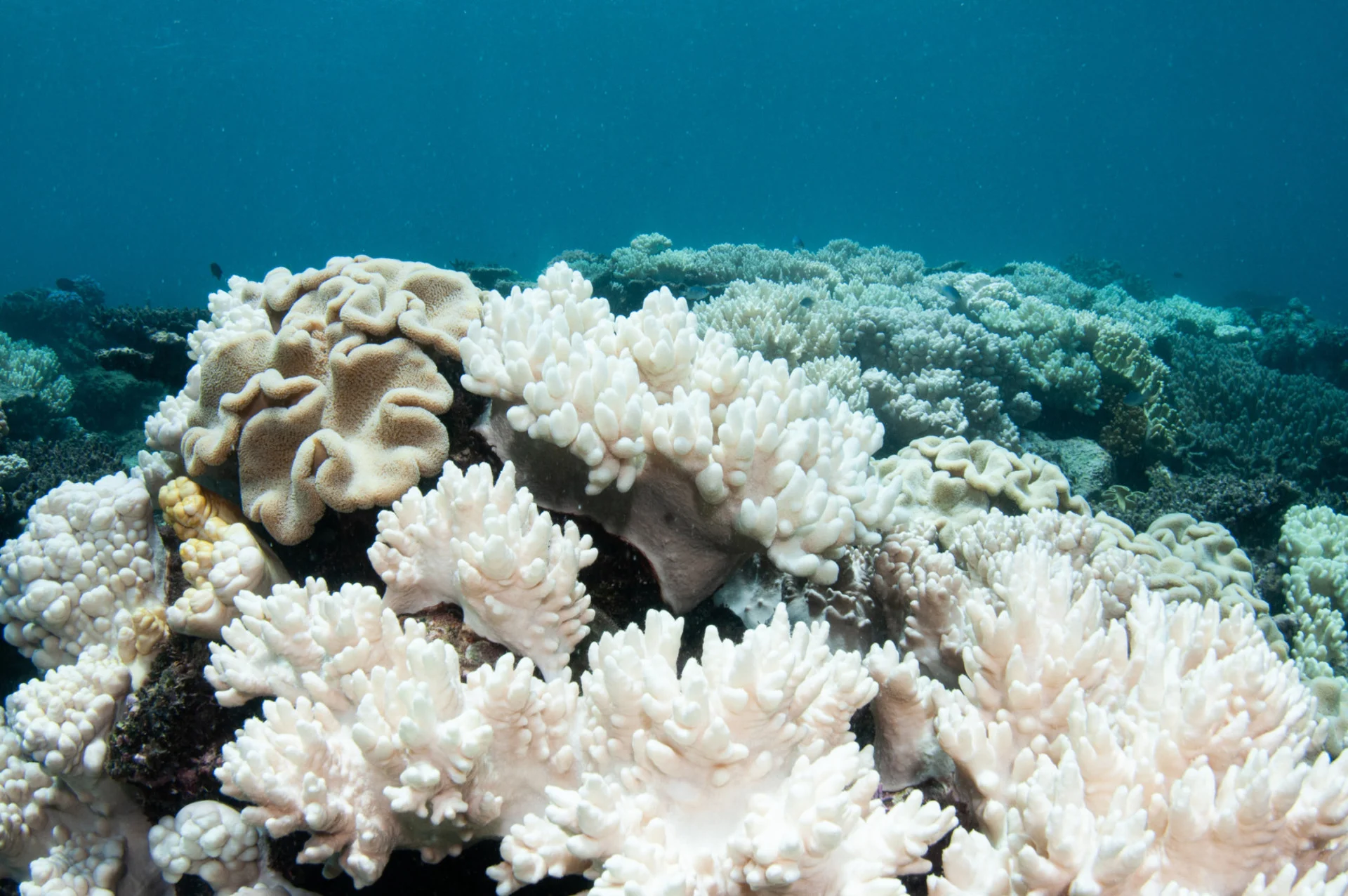
World's coral reefs facing another mass bleaching event — maybe the biggest ever
The world's oceans are experiencing another global mass coral bleaching event because of unprecedented heat, scientists at the U.S. National Oceanic and Atmospheric Administration confirmed.
"This is the fourth time, on record, that coral bleaching has occurred simultaneously within all major ocean basins," said Derek Manzello, ecologist and co-ordinator of NOAA's Coral Reef Watch.
Bleaching — a ghostly discolouration, in stark contrast to vibrant colours found in reefs — can occur when corals are heat-stressed, expelling microscopic algae from within. The longer and hotter it gets, the more likely the corals will die, disrupting fragile ecosystems as well as the lives and livelihoods of people who depend on them.
But the full extent of damage is yet to come. Manzello is seeing an increase in affected reefs every week.
"If that trend continues, this will be the most spatially expansive, global bleaching event on record — in as little as a few weeks, potentially," Manzello warned.
WATCH: The Great Barrier Reef suffered three mass bleaching events within five years
RELATED: Scientists rush to regrow Thailand's dying coastal coral reefs
No ocean spared
Global sea surface temperatures have reached new heights in the last year, driven in part by oceans absorbing the excess atmospheric carbon from greenhouse gas emissions.
SEE ALSO: Experts predict an extremely active 2024 Atlantic hurricane season
NOAA has confirmed mass bleaching in reefs throughout the world, from Panama to the Persian Gulf to the South Pacific. Manzello says just over half of the world's reefs were affected by the current event, but it was near total in the Atlantic — a record-setting 98.5 per cent of the coral zones there experienced bleaching-level heat.
Just last week, the Australian Marine Conservation Society raised the alarm about bleaching in the southern Great Barrier Reef, where the last global bleaching event ended up killing a third of all corals.
DON'T MISS: La Niña will make a comeback this summer as El Niño finally fades

(Coral reef bleaching alerts. Data as of April 11, 2024. Source: NOAA/CBC)
Coral Reef Watch's satellite data shows that hotspots are being seen in every ocean, with Atlantic, Pacific and Indian ocean corals experiencing a range of moderate to extreme heat stress. The unprecedented ocean temperatures even forced a revision of this alert system last year — adding Levels 3 to 5, the last of which represents "risk of near complete mortality."
Stressed out
Rohan Arthur, a marine biologist who has extensively studied the reefs in Lakshadweep off India's southwest coast, expected this declaration.
But as he put it, darkly, "with all the enthusiasm of an undertaker measuring a corpse."
SEE ALSO: Why some of British Columbia’s kelp forests are in more danger than others
Arthur, who is with the Nature Conservation Foundation based in Mysuru, India, has been tracking sea surface temperatures in Lakshadweep over the last year and has seen an unprecedented 1 C rise above average. The corals are starting to show it, too.
"A mass bleaching event itself is a morbidly beautiful sight," Arthur wrote to CBC News via email, "with the reef turning every shade of pink and blue and white on its way to a surreal death."
Having spent more than 25 years looking at those reefs, including past bleaching events, Arthur feels the impending devastation in the pit of his stomach. It's a connection echoed an ocean away by Nicola Smith, assistant professor of biology at Concordia University in Montreal.
"It hits me personally when I think about these damages," said Smith, who was born and raised in the Bahamas. When these marine heat waves hit, there's little escape.
"It feels like you're swimming in a cup of tea," Smith said. Marine organisms are "sitting in these elevated temperatures for very long periods of time, becoming physiologically stressed."

Coral bleaching on the Great Barrier Reef during a mass bleaching event in 2017. (Brett Monroe Garner/ Moment/ Getty Images)
RELATED: We know very little about our impact on one of Earth's largest ecosystems
That stress affects life around the corals, too, including fish that eat the expelled algae. But experts emphasize that bleaching isn't death — yet.
"Recovery can happen," said Xinru Li, a post-doctoral researcher at Princeton University in New Jersey. As temperatures stabilize, corals can bounce back. She notes that hardiness varies between species and location, with some being more tolerant to heat. Smith adds that corals that survive bleaching can develop genes that make them resistant in the future.
"But when bleaching occurs more frequently, there's just no energy, no time for corals to recover," Li explained, noting that amid continued climate change, marine heat waves will be more frequent and intense, effectively "killing the window" for corals to rejuvenate.
Food, shelter and shield
Because they are both organism and habitat — to an estimated 25 per cent of the world's marine life — experts say corals are critical for communities around them.
"When a coral reef dies, the coral fishes will leave the habitat because they cannot survive there," Li explained. She points to the central Pacific nation of Kiribati, where fishers depend on reef fish populations for their livelihoods.
Smith says recreational tourism suffered as well as food security — including having access to affordable sources of protein found within reef fish. Furthermore, as climate change heats up the ocean and degrades these reefs, a line of defence is lost.
"Corals are a natural sea wall," said Smith, describing them as a "kind of barrier to the big waves that would come with intense storms" that climate change is supercharging.
SEE ALSO: Atlantic Ocean is headed for a 'dangerous' tipping point, scientists warn
Is relief coming?
Another contributor to mass bleaching is the naturally occurring phenomenon El Niño, which was also present during the last three events in 1998, 2010 and 2014-2017. Characterized by warming waters in the Pacific, it can also drive up global temperatures and affect weather patterns, too.
WATCH: What will the change to La Niña mean for Canada's summer?
The potential good news is that the current El Niño is waning, with NOAA's Climate Prediction Center expecting a period of neutrality between April and June — with the cooler La Niña pattern "potentially developing during late summer 2024."
The wrinkle, however, is that both of these climate patterns — known as the El Niño-Southern Oscillation — have been getting warmer. Manzello points out that localized coral bleaching events have also happened during the normally cool La Niña years. Still, he hopes it can provide some relief for parts of the Pacific, where the situation is dire.
"La Niña can't come soon enough," Manzello said.
But Smith warns that given the Intergovernmental Panel on Climate Change's estimation that future warming of 2 C could lead to the loss of 99 per cent of the world's coral, hoping for a cooler period is short-term thinking compared to doing more to lower our emissions to keep warming in check.
"It's kind of frustrating, because our lack of action on climate change is literally going to lead to mass extinction."











